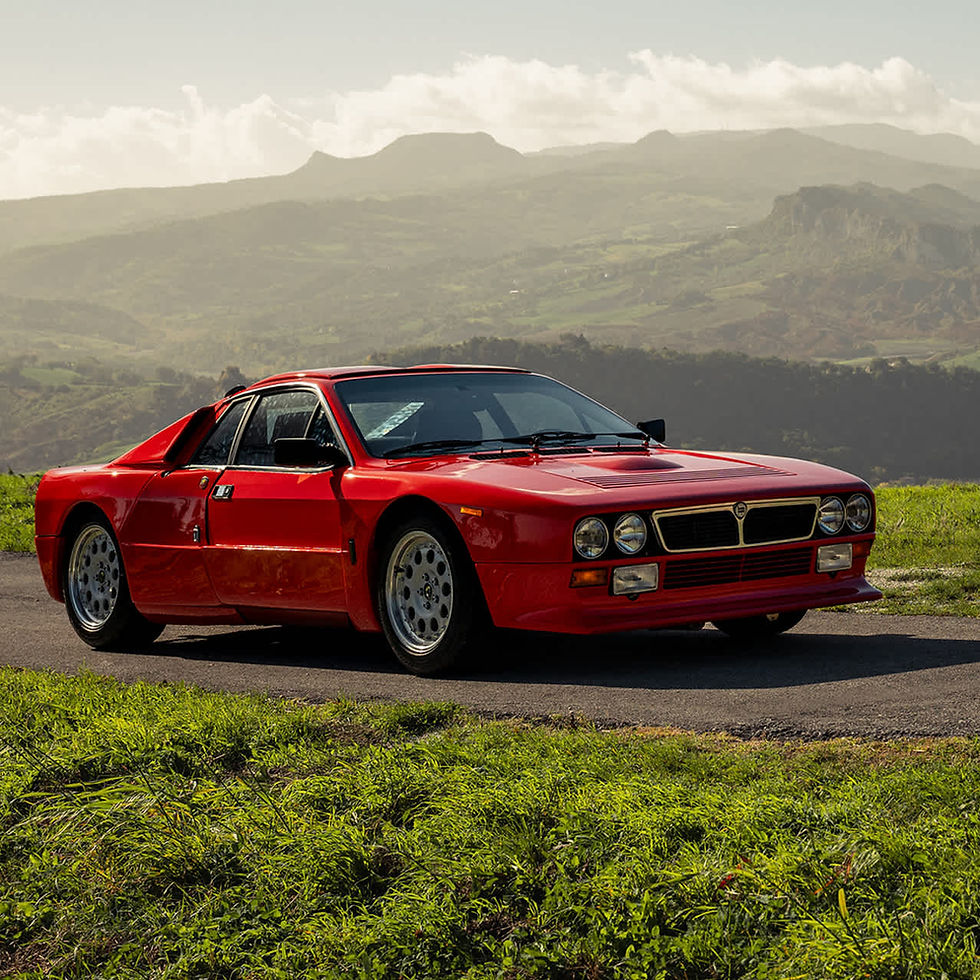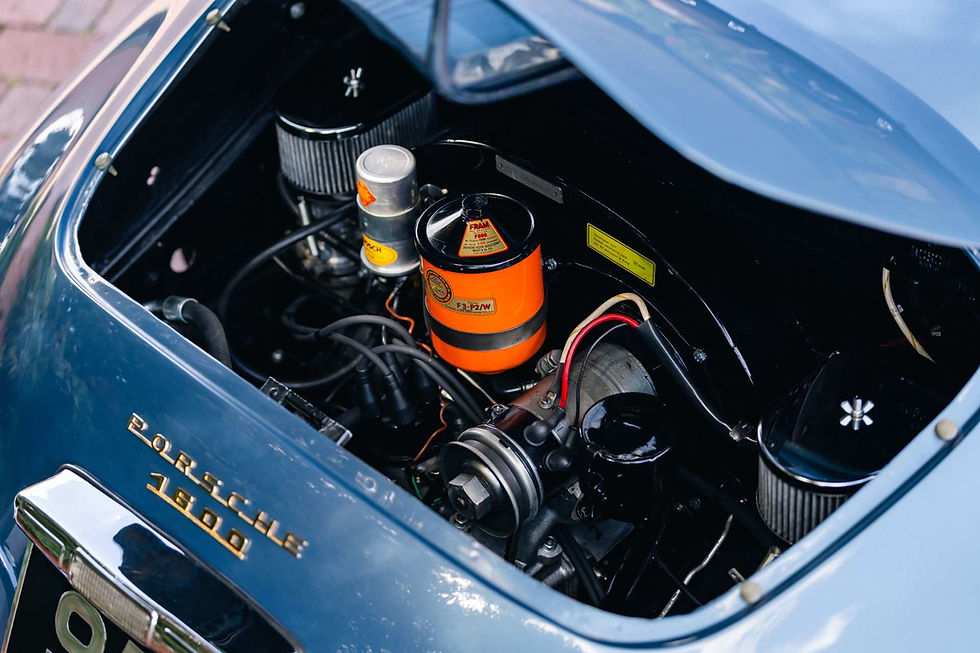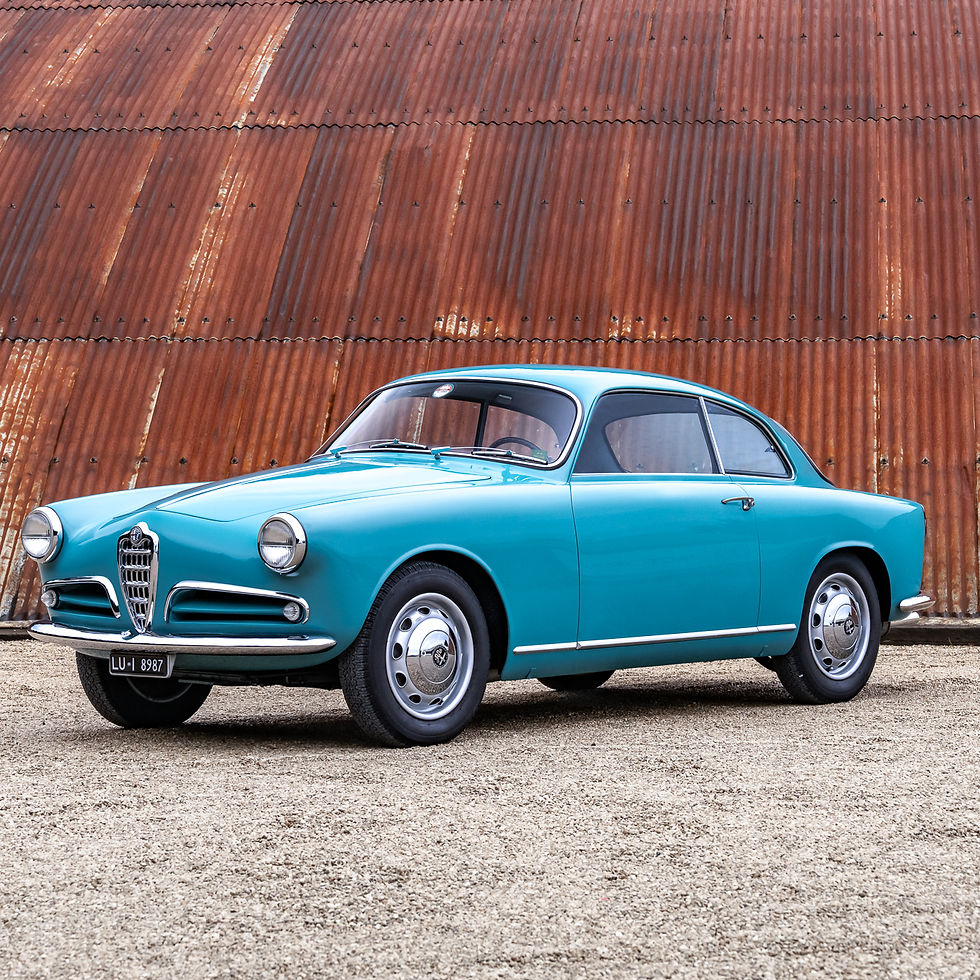Alfa Romeo returning to top-flight endurance racing in the 1960s wasn’t just a business case. It was a matter of national pride. A high-revving two-litre V8, the development for which had begun 10-years prior, was chosen as the basis for a new prototype sports-racing car, christened the Tipo 33.
The brainchild of the revered Autdelta engineer Carlo Chiti, the Tipo 33 was a diminutive car with a slinky body characterised most prominently by its pronounced periscope aft of the open cabin. Its beauty wasn’t skin deep, either. Beneath the surface there was a novel chassis design, comprising a core of thick aluminium tubes arranged in an h-pattern which also incorporated the fuel tanks.
That the Tipo 33 proved to be as quick as it looked is perhaps of little surprise. Fresh ‘out the box’, it was raced by Autodelta test-driver and endurance motorsport veteran Teodoro Zeccoli to victory in the 1967 Côte de Fléron hill-climb in Belgium – a sure sign of things to come.
As the 1968 season dawned, so Alfa Romeo introduced the Tipo 33/2, so named because of the new two-litre V8, which was finally ready for action. The result of extensive testing at the marque’s Balocco proving ground, this second-generation prototype was characterised primarily by its dramatically revised bodywork.
“Alfa Romeo returning to top-flight endurance racing in the 1960s wasn’t just a business case. It was a matter of national pride.”
Handling and weight distribution were the main concerns, hence the revised long tail, radiators relocated to the sides of the cockpit, and lower nose and side skirts. Improved access to the mechanical componentry was welcomed by Alfa’s ingegneri and actually improved cooling to the brakes, engine and cockpit as a bi-product.
Unlike its predecessor, the Tipo 33/2 would make its competitive debut on the world stage – more specifically the 24 Hours of Daytona, round one of the 1968 International Championship for Makes. Four gleaming new cars were entered by the Works Autodelta outfit, of which three went the distance to finish in the top 10 overall. It was a sterling effort in what was among the most challenging motor races on the planet. So much so that the Tipo 33/2 is commonly held as the ‘Daytona’ among the fiercely passionate Alfisti.
The remainder of the 1968 season was a great one for Alfa, whose squadron of hot-shoe drivers was locked in a battle with Porsche and gunning for the two-litre championship. A tally of 21 victories, 15 of which were outright, was telling of the speed and reliability of the Tipo 33/2. And if Vacarrella, Bianchi and Galli’s stunning outright victory at Mugello in Italy wasn’t the jewel in the year’s crown, then sweeping the class podium in the 24 Hours of Le Mans – a showing of crushing dominance – certainly was. The Quadrifoglio was officially back.
Both more exotic and more beautiful than its contemporary rivals, the Tipo 33/2 was a car which benefitted from an extraordinary amount of factory development. And you only have to look at the success of the prototypes from Arese which evolved directly from it, the mighty TT 3 and TT12, to appreciate the value and significance of said development. The latter vanquished the opposition in the 1975 World Sportscar Championship, winning seven of the eight rounds!
Chassis number AR 75033 026
Construction of the magnificent Alfa Romeo Tipo 33/2 we’re thrilled to be offering, chassis number 026, was completed by Autodelta in January of 1968. The closed-coupé car was earmarked for the Works-backed Alfa Romeo Deutschland team to enter in the 1,000-kilometre race at the Nürburgring – round six of that year’s International Championship for Makes.
Lining up in an impressive field of factory and privateer outfits with the likes of Jacky Ickx, Jo Siffert, Brian Redman and Ignazio Giunti on their rosters, this Alfa Romeo was raced by the Sicilian Le Mans, Sebring and Targa Florio winner Nino Vaccarella alongside Dr. Herbert Schultze.
A native German with intimate knowledge of the infamously challenging Nürburgring Nordschleife circuit, Schultze had proved his worth in the Eifel mountains less than 12 months earlier when he finished second in the six-hour European Touring Car Championship race.
Perhaps unsurprisingly, the pairing proved as strong in reality as it had looked on paper. Around the undulating 23-kilometre racetrack, Vaccarella and Schultze qualified chassis number 026 seventh overall – a result they followed on race day with a stunning podium finish in the two-litre class.
For the remainder of the 1968 season, this Tipo 33/2 contested select events in the European Hill Climb Championship, driven by Dr. Schultze. In April the following year, chassis number 026 was road-registered in Germany, the documentation for which notes the engine number as 0035 – the very same engine the car retains to this day.
Still racing under the Alfa Romeo Deutschland banner, the German driver Michel Weber contested 11 hill-climb events across Europe with this Tipo 33 in 1969. And it’s fair to say he found his groove with the car, picking up two victories on home soil and a impressive podium in the world-famous Trento-Bondone hill-climb.
“Vaccarella and Schultze qualified chassis number 026 seventh overall – a result they followed on race day with a stunning podium finish in the two-litre class.”
One more year of competition beckoned for this Alfa Romeo, again in Weber’s hands, before it was sold into private hands with a gentleman by the name of Heinz Isert. During Isert’s 13-year ownership, chassis 026 was issued with its ONS Wagen-Pass and, in 1977, converted to open Spider configuration.
Europe remained the home of this Tipo 33/2 for almost 25 years, during which time it was restored to its original closed-coupé ‘Daytona’ specification. It was acquired in 2001 by the Japanese motorsport legend Kazumichi Goh, whose eponymous racing team had triumphed in the 1996 All Japan Grand Touring Car Championship and would go on to win the 24 Hours of Le Mans with Audi in 2004. An FIVA Identity Card was issued in April of 2002 and a Japanese FIA Historic Technical Passport awarded in August of 2005.
Chassis 026 enjoyed two further owners in Japan before it returned to Europe in 2014, joining the stable of a prominent historic racing driver with a mind-boggling collection of historically significant competition cars. Since then, the car has been carefully stored and not turned a wheel in anger.
Today, this ultra-special Alfa Romeo Tipo 33/2 Daytona boasts historical significance and eligibility most 1960s competition cars could only dream of. Its dazzling beauty would surely be welcomed by the world’s most prestigious concours events. The fact it’s road-registered in Europe means chassis 026 could be entered in prestigious road-rallies such as the Tour Auto in France and the Modena Cento Ore in Italy. And, of course, the Le Mans Classic would be the tallest peak for this Alfa to summit with regards to circuit-based historic motorsport.
Furthermore, this Tipo 33’s accompanying history file comprises a great wealth of fascinating documentation, including copies of its period homologation papers, ONS Wagen-Pass, original German registration, Autodelta correspondence, race programmes, FIVA Identity Card and a raft of invoices.
The late-1960s into the early-1970s was a particularly exciting and evocative epoch for Alfa Romeo, whose Tipo 33 prototypes benefitted from extraordinary levels of factory development and support and, ultimately, proved the class of the international endurance motorsport field. Quite rightly, they are among the most desirable sports-racing cars of them all, dripping with Latin seduction and bristling with eight-cylinder energy.
“The Tipo 33 prototypes benefitted from extraordinary levels of factory development and support and, ultimately, proved the class of the international endurance motorsport field.”
Restored to the specification in which it originally finished third in the world-championship Nürburgring 1000km race in 1968, chassis 026’s trump card is undoubtedly its eligibility in today’s historic motoring/motorsport world.
































































































